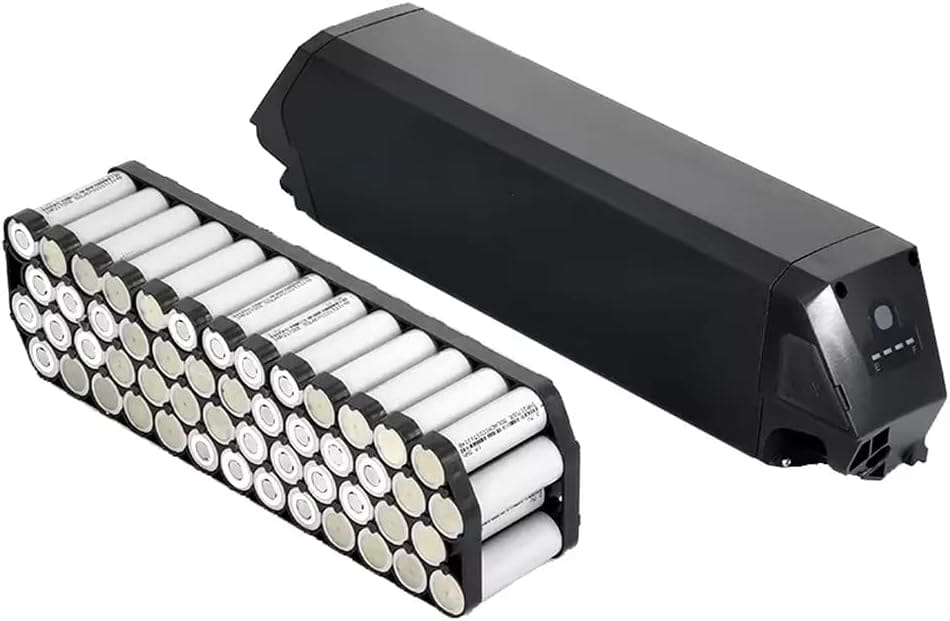
How to Extend Your E-Bike Battery Life: Practical Tips
 Charge It Right, Every Time
Charge It Right, Every Time
Your battery’s health starts with how you charge it. Treat it like your phone (but, you know, it is a bit more expensive).
- Don’t let it hit zero. Draining your battery to 0% regularly stresses it out. Try to recharge when it’s between 20-30%. If you do hit empty, plug it in ASAP.
- Avoid overcharging. Most modern e-bike batteries have protection to prevent overcharging, but don’t leave it plugged in for days. Once it’s full, unplug it.
- Aim for the sweet spot. Keeping your battery between 20-80% charge is ideal for long-term health. Partial charges are totally fine and can extend its life.
- Use the right charger. Stick with the charger that came with your bike. Cheap knockoffs can mess with voltage and damage the battery.
Pro tip: If you’re charging in a garage or shed, make sure it’s not freezing cold or crazy hot—extreme temps can hurt the battery. Room temperature is your friend.
Store It Like a Pro
How you store your e-bike battery when you’re not riding can make a huge difference. Whether it’s overnight or over the winter, here’s how to keep it happy:
- Keep it cool, not cold. Store your battery in a dry, moderate environment (think 50-77°F or 10-25°C). Avoid leaving it in a hot car or a freezing basement.
- Partial charge for long-term storage. If you’re not riding for a while (like during winter), charge the battery to about 50-60% before storing. Check it every month or two and top it up if it dips below 30%.
- Don’t leave it on the bike. If your e-bike is sitting unused, take the battery off and store it separately. This protects it from moisture or random electrical issues.
I learned this the hard way after leaving my battery on the bike in a damp garage for a month. It still worked, but I could’ve saved some lifespan with better habits.
Ride Smarter, Not Harder
Your riding style has a big impact on how fast your battery drains. Here are some ways to make every charge last longer:

- Ease up on the throttle. If your e-bike has a throttle, go easy on it. Constant full throttle burns through juice fast. Use pedal assist instead to share the workload.
- Choose the right assist level. Most e-bikes have multiple power modes (like Eco, Normal, Turbo). Stick to lower assist levels when you don’t need the extra boost like on flat roads or downhills.
- Pedal more, rely less on the PAS. The more you pedal, the less your battery must work. It’s also a great workout, so win-win!
- Avoid stop-and-go. Starting from a dead stop (like at traffic lights) uses more power than maintaining a steady pace. Try to keep a consistent speed when possible.
- Check your tire pressure. Underinflated tires make your motor work harder, draining the battery faster. Pump those tires up to the recommended PSI before every ride.
Fun fact: I started using Eco mode on my daily commute, and I swear I’m getting an extra 5-10 miles per charge. Small tweaks, big results.
Maintain Your Bike to Save Your Battery
A well-maintained e-bike doesn’t just ride better, it’s easier on the battery, too. Here’s what to keep an eye on:
- Keep the chain clean and lubed. A gritty or dry chain creates resistance, forcing the motor to work harder. Clean and lube it every couple of weeks, or more if you ride in wet or dusty conditions.
- Check your brakes. Dragging brakes (when the pads rub the wheel) waste energy. Make sure they’re adjusted properly so your motor isn’t fighting them.
- Lighten the load. Carrying extra weight like a heavy backpack or panniers makes the battery work harder. Only pack what you need.
- Update your firmware. Some e-bikes get software updates that optimize battery performance. Check with your manufacturer’s website or app to see if there’s a new version.
I used to skip chain cleaning because, well, lazy. But once I got into the habit, I noticed my battery wasn’t draining as fast. It was totally worth the 10 minutes.
 Refurbish Old Batteries to Squeeze Out More Life
Refurbish Old Batteries to Squeeze Out More Life
-
Diagnose the issue. First, check if it’s really the battery. A bike shop can test its capacity or spot if it’s a wiring or motor issue instead. Some batteries have a “state of health” display or app to show how much life is left.
-
Replace weak cells. E-bike batteries are made of individual cells (like lithium-ion 18650s). If only a few are failing, a pro can swap them out for new ones. This is cheaper than a full replacement but requires someone with the skills to open the battery safely.
-
Rebalance the battery. Over time, cells can get out of sync, reducing performance. A technician can rebalance the battery management system (BMS) to even things out, boosting range.
-
Know the risks. Refurbishing isn’t always a sure thing—some batteries are too far gone. Plus, opening a battery yourself is risky (think fire hazards or voiding warranties). Unless you’re an expert, leave it to a certified shop.
-
Find a specialist. Look for e-bike shops or battery refurbishing services in your area. Some companies, like Spinline or Grin Technologies, specialize in e-bike battery rebuilds. Expect to pay $100-$300 depending on the battery size and work needed.
Know Your Battery’s Limits
Every e-bike battery has a lifespan, usually measured in charge cycles (one full charge from 0-100%). Most last 500-1,000 cycles, which translates to 2-5 years for regular riders. But here’s how to stretch that:
- Avoid extreme conditions. Riding in super-hot or freezing weather can degrade the battery over time. If it’s below 32°F (0°C) or above 95°F (35°C), try to limit long rides or high assist levels.
- Don’t push it too hard. Constantly maxing out your motor (like climbing steep hills in Turbo mode) stresses the battery. Use a lower gear and pedal more to share the load.
- Monitor its health. If your e-bike has a display or app, check the battery’s status periodically. Some systems warn you if the capacity is dropping faster than normal.
If your battery’s starting to lose range (like, it used to get 40 miles but now only 25), it might be nearing the end. Talk to your bike shop about recycling or replacement options.
Bonus: Plan Your Routes Wisely
This one’s less about maintenance and more about strategy. Planning your rides can save battery life and make your trips more fun:
- Avoid monster hills. Steep climbs are battery killers. If you can, take a flatter route or detour to a gentler slope.
- Map out charging spots. For long rides, know where you can plug in like cafes or bike shops. Some apps even show public charging stations.
- Ride with the wind. If it’s a windy day, try to start with a tailwind and save the headwind for when you’ve got more juice left.
I started using a bike route planner app, and it’s been a game-changer for avoiding battery-draining hills. Plus, I’ve discovered some new paths!

